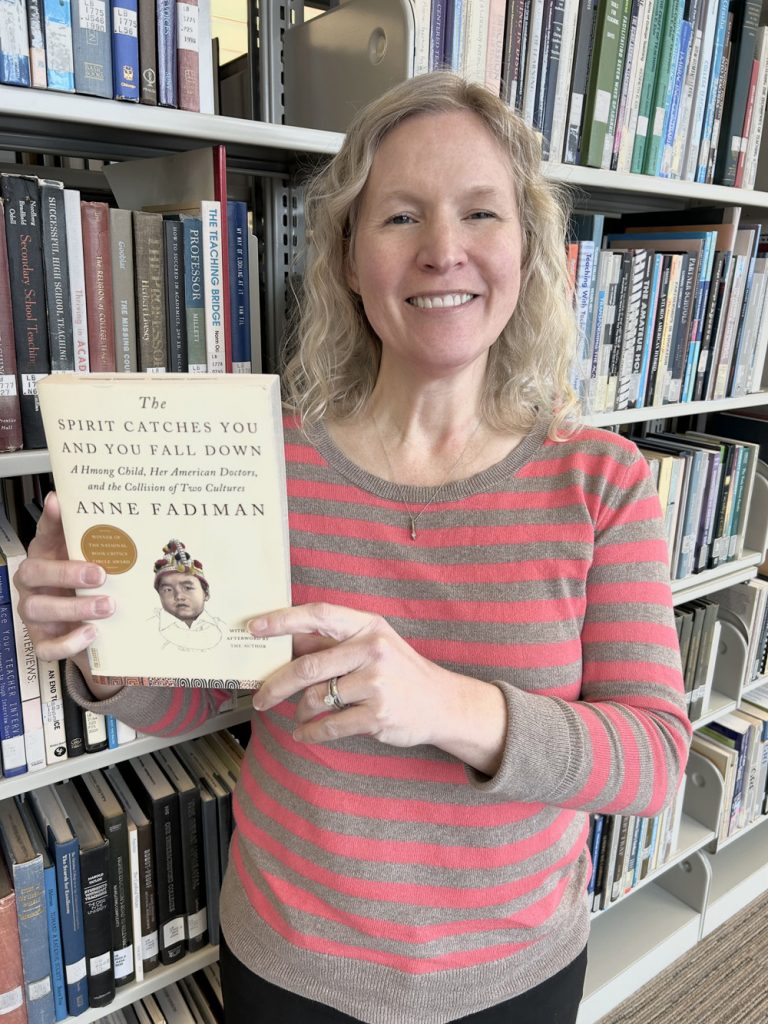Read This Next: Ruth Connell
For the inaugural “Read This Next” post, I read and am recommending the 1997 book titled ”The Spirit Catches You and You Fall Down : a Hmong Child, her American Doctors, and the Collision of Two Cultures,” by Anne Fadiman (call number RA418.5.T73 F33 2012).
At Valpo, every college and department on campus has their own subject librarian. Our subject specialists work to purchase relevant materials for the library’s collection, help students with research projects, and teach research skills within courses. “The Spirit Catches You…” came to my attention because selected chapters were required reading for most Valpo freshmen this fall. During a week in October, these first-year CORE class sections came to the library for a session on conducting research, and I had the opportunity to work with about 60 of these students. Before these sessions, I had not heard of their assigned book. I have always been interested in reading what our students are reading, so I checked out one of the library’s multiple copies and began reading.
This nonfiction work focuses on Lia Lee, a girl born in Merced, California to a family of Hmong immigrants in 1982. At three months old, she has the first of many epileptic seizures. The book has three major intertwined storylines: the timeline of Lia’s medical diagnosis, treatment, and care; the culture clash and miscommunications between Lia’s doctors and the Lee family; and the history of the Hmong people and their forced migrations. The book’s author is an outsider to the Hmong community, but spent a decade researching the well-annotated book.

In Hmong culture, epilepsy is often viewed positively because those with the condition often become divine healers. Western medicine and Hmong healing practices differ widely in their treatment of epilepsy. Given these differences, as well as the communication difficulties, the Lee family and Lia’s doctors were often at odds. All of these factors contributed to many system failures, including Lia being removed from her family and placed into foster care — despite her parents’ devotion to her — in order to ensure she received her complicated schedule of medications. Although Lia’s story does not have a happy ending, it did result in some positive outcomes. Partially because of the book’s popularity and wide readership, medical schools and professionals are much more aware of cross-cultural communication issues and needs. I enjoyed this book, and recommend it to readers interested in medical and cross-cultural nonfiction.
